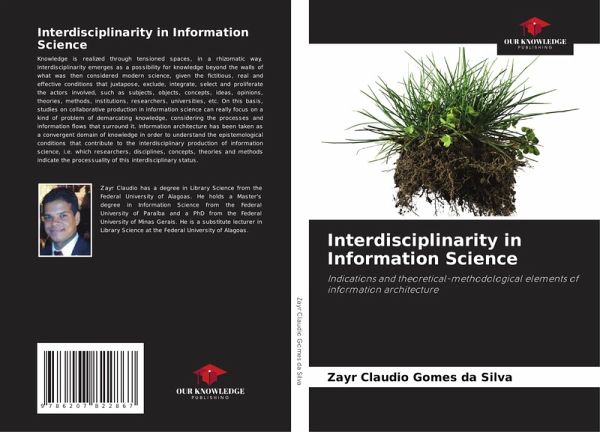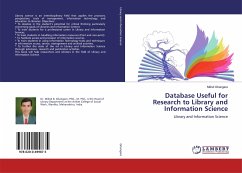
Interdisciplinarity in Information Science
Indications and theoretical-methodological elements of information architecture
Versandkostenfrei!
Versandfertig in 6-10 Tagen
43,99 €
inkl. MwSt.

PAYBACK Punkte
22 °P sammeln!
Knowledge is realized through tensioned spaces, in a rhizomatic way. Interdisciplinarity emerges as a possibility for knowledge beyond the walls of what was then considered modern science, given the fictitious, real and effective conditions that juxtapose, exclude, integrate, select and proliferate the actors involved, such as subjects, objects, concepts, ideas, opinions, theories, methods, institutions, researchers, universities, etc. On this basis, studies on collaborative production in information science can really focus on a kind of problem of demarcating knowledge, considering the proces...
Knowledge is realized through tensioned spaces, in a rhizomatic way. Interdisciplinarity emerges as a possibility for knowledge beyond the walls of what was then considered modern science, given the fictitious, real and effective conditions that juxtapose, exclude, integrate, select and proliferate the actors involved, such as subjects, objects, concepts, ideas, opinions, theories, methods, institutions, researchers, universities, etc. On this basis, studies on collaborative production in information science can really focus on a kind of problem of demarcating knowledge, considering the processes and information flows that surround it. Information architecture has been taken as a convergent domain of knowledge in order to understand the epistemological conditions that contribute to the interdisciplinary production of information science, i.e. which researchers, disciplines, concepts, theories and methods indicate the processuality of this interdisciplinary status.












